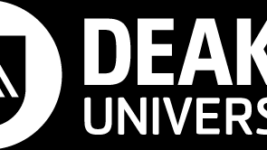News
10 Sep 2020
Getting a Piece of the Pie

Subscribe to CX E-News
What are these ‘shovel ready’ projects and how do you get in on the action?
The New Zealand Government have earmarked $3 billion for ‘shovel ready’ infrastructure projects. They established an Infrastructure Reference Group to work with local councils and businesses to identify projects to support the economy during the COVID-19 rebuild. Cabinet then decided the key sectors and regional breakdown of funds with more than 150 projects worth $2.6 billion being approved, admittedly always with the caveat ‘in principal’.
The shovel-ready aspect referred to the requirement that the projects would be ready to go within six to twelve months. The investment package included spending $464 on housing and urban development, $460m on environmental projects, $670 on community and social development, and $708m on transport projects. Projects announced so far do include a lot of cycleways, the New Zealand go-to for an economic rebuild, but many others could potentially have audio-visual components – the schools, the hospitals, the sports centres, the construction projects.
The turnaround on the Registration of Interest and the Request for Proposals (RFP) on these projects is intended to be fast. Rather than go out to tender every time, some councils are looking to establish ‘approved’ partners to reduce the number of companies in the running. They are leaning towards ‘ECI’ or Early Contractor Involvement projects where the contractor has more input on the design to minimise issues with the programme further down the line. Contractors are seeking subcontractors who cannot only provide the price for a job in a matter of days, but also can quickly provide the information to support the other documentation requested during the tendering process. Where time is of the essence, having your attributes on paper, in good order, and up-to-date could pay dividends.
There are a number of things that you can do to improve your chances of being in the running for a piece of the pie. Firstly, make sure you do not miss the tenders when they come out. Even if you are already signed up to the New Zealand Government Electronic Tenders Service (GETS), check that you are subscribed to the appropriate tender notifications and maybe broaden the location settings. Touch base with contractors that you do or could potentially work with and ensure that they are aware of your capabilities.
Review your paperwork. Write up your recent projects. Many RFPs restrict relevant experience to the last three years. Have a selection of projects that are ready to go, with client testimonials, feedback surveys, and photos. Bring out where you have been involved in the design process, or added value, or innovated for the benefit of the client.
Pull together your staff curriculum vitae and update them, including the recent projects. Your staff score points for having been involved in the relevant projects. Add in all the recent training that you have undertaken – that first aid course, SiteSafe, confined space training and so on. Update your qualifications. They all score points, and if your competitors are doing it, you need to too.
Collate all your quality, health and safety, sustainability and environmental certificates. There is a push for the shovel-ready projects to be sustainable, so you may look at working towards further certification. Note though that sustainability wears many hats, so for some councils it can be more on the ‘green’ side, whereas for others it is of an economic nature, and they want to see companies making a concerted effort to give back financially to the local community by employing locals and supporting community initiatives.
For many small to medium businesses, the head contractor will tick these boxes on your behalf, but where a subcontractor is taking on over ten percent of the scope of the project, the tendering bodies are asking to see a lot more information. Make your life easier by getting the paperwork sorted in advance – as we all know, RFPs always seem to hit your desk on the busiest weeks of the year.
Subscribe
Published monthly since 1991, our famous AV industry magazine is free for download or pay for print. Subscribers also receive CX News, our free weekly email with the latest industry news and jobs.






